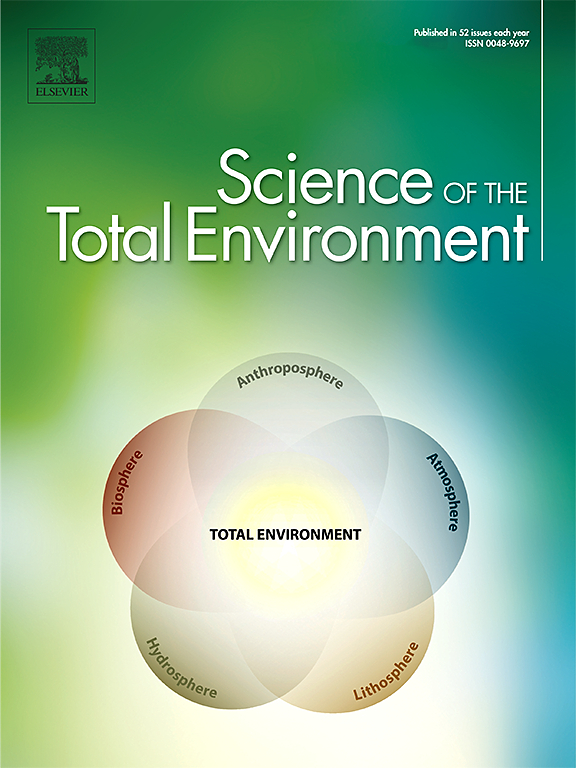Combined effects of copper and temperature on the functional response of native (Mesocyclops longisetus and Microcyclops dubitabilis) and invasive (Mesocyclops pehpeiensis) copepods fed rotifers and cladocerans
IF 8.2
1区 环境科学与生态学
Q1 ENVIRONMENTAL SCIENCES
引用次数: 0
Abstract
Environmental stressors such as temperature, heavy metal toxicity and the presence of exotic species may affect the sensitivity and feeding patterns of freshwater zooplankton. However, the combined effect of these stressors is not well studied. The cyclopoid copepod Mesocyclops pehpeiensis, was originally described from Asia but is now distributed in North America and Europe. The aim of this study was to determine the sensitivity and functional response of non-gravid and gravid females of two freshwater native copepods: Mesocyclops longisetus and Microcyclops dubitabilis and an invasive species Mesocyclops pehpeiensis fed on the cladoceran Moina macrocopa and the rotifer Brachionus calyciflorus exposed to copper at 18, 23 and 28 °C. We hypothesized that the adverse effect of the presence of Cu or non-optimal temperature would be greater on native than the exotic species. Our results showed that nauplii of all three copepod species were eight times more sensitive than adults. Microcyclops dubitabilis was the most sensitive compared to both species of Mesocyclops. Also, the sensitivity of all species in all developmental stages increased with increasing temperature. All three copepod species showed Type II functional response and there were differences in the feeding patterns among the three copepod species. Native M. dubitabilis consumed less prey than the invasive M. pehpeiensis. M. longisetus consumed more cladoceran prey than M. pehpeiensis, but M. pehpeiensis consumed more rotifer prey than M. longisetus. Generally, prey consumption decreased as copper concentration increased. Significant differences in prey consumption were observed between gravid and non-gravid females with regard to the test temperatures, Cu treatments and copepod species tested. Mesocyclops longisetus, especially the non-gravid females generally consumed more prey than M. pehpeiensis, especially at the highest temperature tested (28 °C). Studies on zooplankton can be conducted over a short period but providing insights into the combined effects of stressors on zooplankton communities.

求助全文
约1分钟内获得全文
求助全文
来源期刊

Science of the Total Environment
环境科学-环境科学
CiteScore
17.60
自引率
10.20%
发文量
8726
审稿时长
2.4 months
期刊介绍:
The Science of the Total Environment is an international journal dedicated to scientific research on the environment and its interaction with humanity. It covers a wide range of disciplines and seeks to publish innovative, hypothesis-driven, and impactful research that explores the entire environment, including the atmosphere, lithosphere, hydrosphere, biosphere, and anthroposphere.
The journal's updated Aims & Scope emphasizes the importance of interdisciplinary environmental research with broad impact. Priority is given to studies that advance fundamental understanding and explore the interconnectedness of multiple environmental spheres. Field studies are preferred, while laboratory experiments must demonstrate significant methodological advancements or mechanistic insights with direct relevance to the environment.
 求助内容:
求助内容: 应助结果提醒方式:
应助结果提醒方式:


